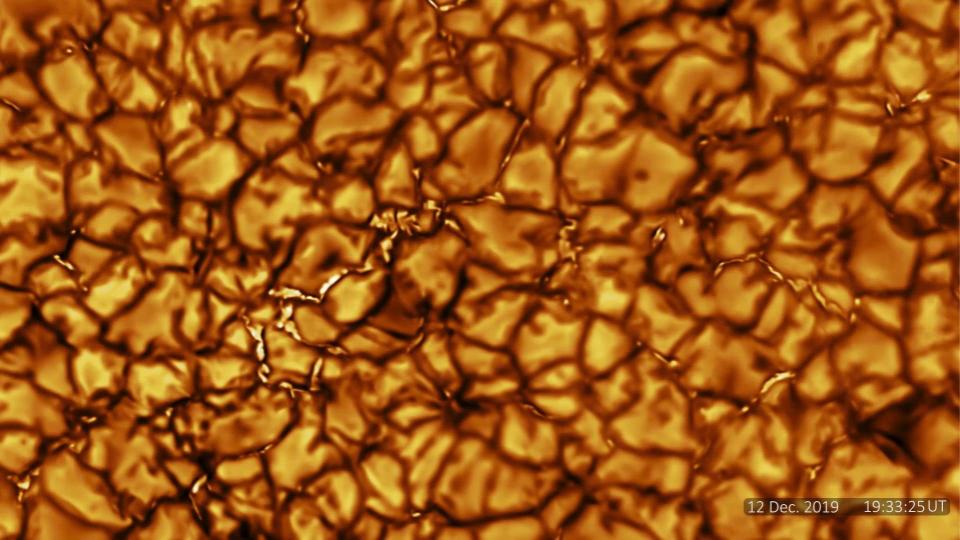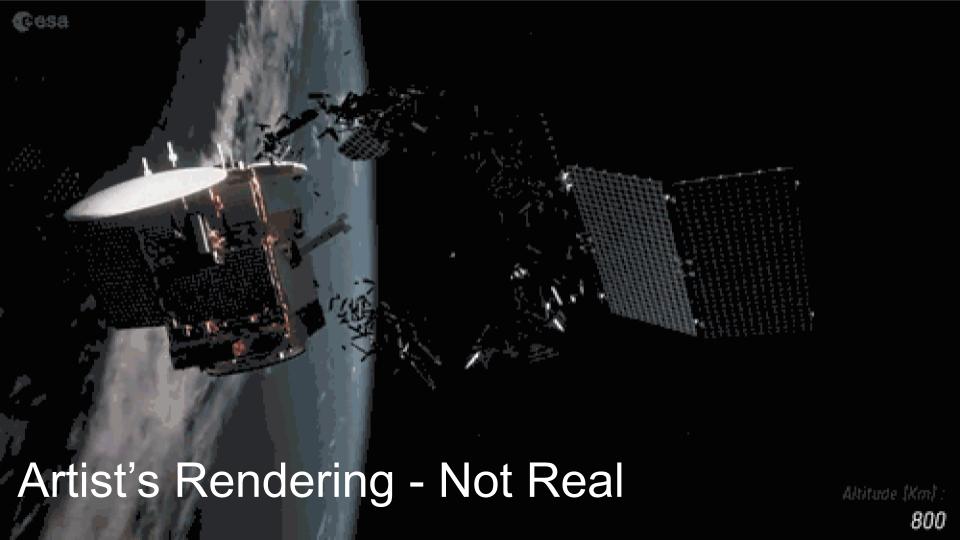In a week of gloomy winter weather in the US, new magnetic details from the Inouye Telescope, and new solar wind sounds from the Parker Solar Probe brighten our day, and there was no satellite collision to brighten our night last night.

- Inouye Solar Telescope: First Light (NSO)
- Never-before-seen images of Sun released from world’s largest solar telescope (U of Hawaii)
For our North American team, it is winter. Here in Illinois it’s been drizzling about a ½ cm of snow a day for week after week after week – or for at least 10 days that feel like 10 weeks. When your in the coldest, grossest time of year, it is easy to get excited about a little bit of sun, and it is with both awe and amusement that we share with you the newest images from the newest solar telescope.
This week we received no less than 3 press releases announcing that the Inouye Telescope on Haleakala has begun to capture images of the Sun. This 4 meter telescope allows solar scientists to see fine details on the sun in never-before-seen resolution. In new images, which you can see at DailySpace.org, we can see cell-like structures that are the size of Texas or France, and these images, with 3 times higher resolution than any prior instrument, can resolve features as small as Manhattan Island. This has allowed the imaging of features just 20 miles or 30 kilometers across.
This new telescope looks at the sun in a way that is fundamentally different from what we do with our spaced-based observatories, which are smaller and have larger fields of view that focus on the Sun’s roiling outer layers, and often view the sun in different wavelengths – or colors – of light that can’t be seen from Earth. With this multi-meter scope, scientists are focusing in on the details of the Sun’s magnetic field effects at the surface, where convective cells roil like the surface of churning oil.
These images don’t yet bring new science, and in all likelihood we’ll be waiting until next winter before we start seeing breakthroughs from its remarkable images. For now, however, as our skies hang grey, the teams at the Institute for Astrophysics, which administers this facility, and at the National Science Foundation, which fund this facility, decided we needed to share in their sun-filled preliminary data.
These weren’t the only folks with the Sun on their mind. The Johns Hopkins APL team, working with the Parker Solar Probe, have processed their data to reveal the pressure wave within the plasma within the Solar Winds. If you were able to survive in the harsh environment explored by the Parker Solar Probe, you wouldn’t be able to hear this with your ears – the solar wind is simply far too thin – but the Parker’s sensors are sensitive enough to catch the whistling and humming of our Sun. In the audio files we’re about to play, your hearing a processed version of the pressure waves in the hot, charged plasma that makes up the solar corona.

In our final story of the day, we would like to share that two satellites did not crash over Pittsburgh, Pennsylvania last night, but they did come fairly close. These two aged chunks of metal, the esteemed IRAS space telescope and military satellite, GGSE-4, are orbiting roughly 550 miles or 900 km up, and have been dead longer than some of you listening have been alive. GGCE-4 stopped working in 1972 and IRAS in 1983. Since they are dead, there is nothing anyone can do to keep them from hitting each other or anything else. Tracking stations on Earth, including Australian National University’s Space Environment Centre, noted these two were going to pass within 15-30 m of each other, and do to lack of information on how the craft and their appendages were oriented, it was unclear if they might still tangle and collide.
They didn’t. This time.
If they had, and if the weather had been clear, this collision would have actually been visible. With more than 21,000 objects larger than 10 cm orbiting the Earth it is only a matter of time before remarkable, and highly visible, collision does happen. In 2009 two communications satellites, an active Iridium communications satellite and a Russian military satellite, collided. It was thought that these two would miss, and Iridium made the choice not to move their satellite to increase the safety margin because they wanted to save fuel. That was a mistake. Today a lot more efforts are put into tracking spacecraft. … but as I said – the two spacecraft that just missed each other were dead and nothing could be done. When the big collision happens, this could cause a chain reaction, with the debris flying off and creating high speed debris in unknown orbits. This is the real problem with collisions – the debris can wreck entire orbital regions, as the chunks of former spacecraft form rings around our world.
So far, no boom. A boom will come. Let’s hope it comes far in the future for satellites, and very very soon for Betelgeuse.
<———————>
And that rounds out our show for today.
Thank you all for listening. The Daily Space is written by Pamela Gay, produced by Susie Murph, and is a product of the Planetary Science Institute, a 501(c)3 non profit dedicated to exploring our Solar System and beyond. We are here thanks to the generous contributions of people like you. Want to become a supporter of the show? Check us out at Patreon.com/cosmoquestx
Each live episode of the Daily Space is archived on YouTube. If you miss an episode on Twitch.tv, you can find it later on youtube.com/c/cosmoquest. These episodes are edited and produced by Susie Murph.
We are here thanks to the generous contributions of people like you who allow us to pay our staff a living wage. Every bit, every sub, and every dollar committed on Patreon.com/cosmoquestx really helps. If you can’t give financially, we really do understand, and there are other ways you can help our programs. Right now, the best way you can help is to get the word out. Let your friends know, share our channel to your social media, or leave a recommendation. You never know what doors you are opening.
We really wouldn’t be here without you – thank you for all that you do.


 We record most shows live, on Twitch. Follow us today to get alerts when we go live.
We record most shows live, on Twitch. Follow us today to get alerts when we go live.